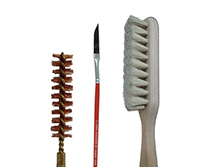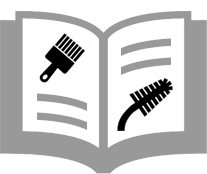The Problem with Using Stainless Steel Brushes
The use of stainless steel brushes on titanium parts has been a common practice since titanium came into widespread industrial use. When a titanium part is brushed with a stainless steel brush, small amounts of the stainless steel are abraded from the brush fiber and embedded in the surface of the titanium. The two dissimilar metals are physically bound. When moisture is added, the result is the creation of a battery and the start of galvanic corrosion.
Galvanic corrosion (also called dissimilar metal corrosion) refers to corrosion damage induced when two dissimilar materials are coupled in a corrosive environment. When a galvanic couple forms, the least noble of the metals in the couple becomes the anode [the stainless steel] and corrodes faster than it would all by itself, while the other becomes the cathode [the titanium part] and corrodes slower than it would alone. "A small anodic area relative to the cathodic area should be avoided" [MIL-STD-8898 5.1.4 ].
The extent of the corrosion is determined by the efficiency of the battery. Like most batteries, the potential is expressed in volts. The amount of potential voltage in the couple is expressed in the Anodic Index and is determined by the difference in the voltage potentials between the two metals. Titanium has a relative potential of .30v. The 400 series stainless steels have a potential of .60v. The difference in their potentials is .30v. If a 300 series stainless brush was used, the difference is .20v.
Using a pacified stainless steel, which is much closer to titanium in the Anodic Index, is an acceptable solution when joining fixed parts but, a brush, unlike a washer, is constantly being abraded against the work piece. With a pacification layer measured in angstroms [~ 3 angstroms] it is evident that protective oxide would be readily removed and the part of the brush in contact with the work piece would no longer be pacified.
Recommendation
How much corrosion is acceptable? That would, of course, depend on where it appeared: In your artificial heart valve? In the actuator arm of a space probe? In the rudder control assembly of a 747? The solution to the problem is to use titanium brushes on titanium parts. No dissimilar metals = no battery = no corrosion.
Anodic Index V
Titanium 0.30
18% chromium type corrosion-resistant steels [302, 304, 316] 0.50
12% chromium type corrosion-resistant steels [410, 416, 420] 0.60
Normal Environment
In normal environments, such as storage in warehouses or non-temperature and humidity controlled environments there should not be more than 0.25 V difference. A 300 series brush is marginally acceptable but, a titanium brush is preferred.
Controlled Environment
In controlled environments that are temperature and humidity controlled, 0.50 V can be tolerated. A titanium brush is not required
Harsh Environment
In harsh environments, such as outdoors, high humidity, and salt environments there should be not more than 0.15 V difference in the "Anodic Index." The only acceptable wire brush would contain 100% titanium.
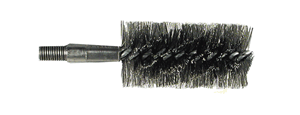
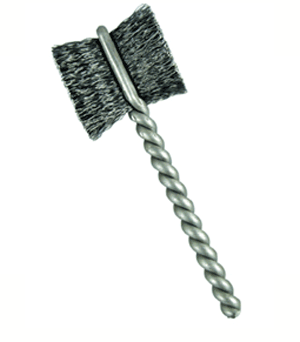
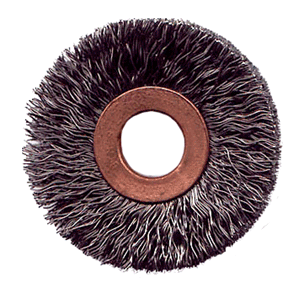
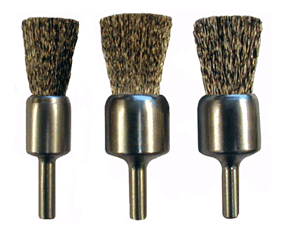

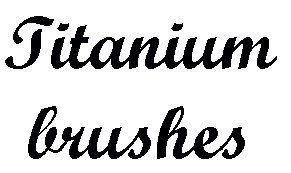

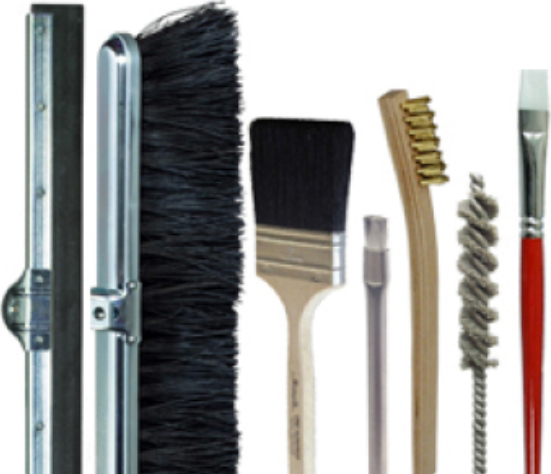
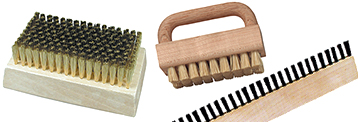 Block Brushes
Block Brushes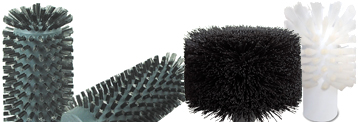 Bore Brushes
Bore Brushes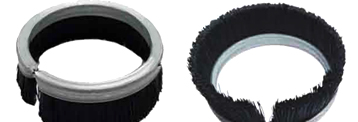 Cup Brushes
Cup Brushes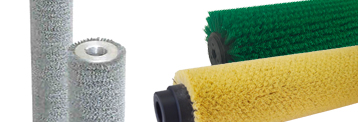 Cylinder Brushes
Cylinder Brushes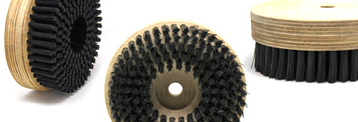 Disk Brushes
Disk Brushes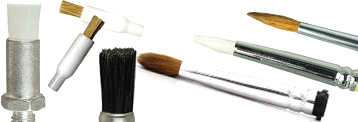 Flow Thru Brushes
Flow Thru Brushes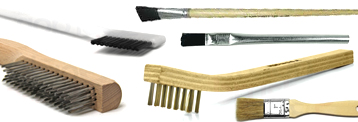 Hand Held Brushes
Hand Held Brushes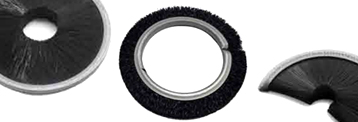 Inward & Outward Disk Brushes
Inward & Outward Disk Brushes Inward Wound Coil Brushes
Inward Wound Coil Brushes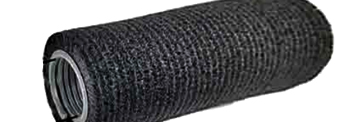 Outward Wound Coil Brushes
Outward Wound Coil Brushes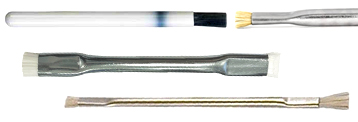 Pencil & Applicator Brushes
Pencil & Applicator Brushes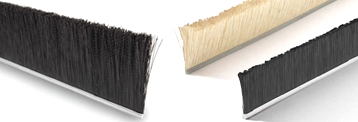 Straight Strip Brushes
Straight Strip Brushes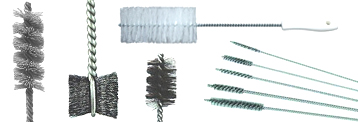 Twisted-In-Wire Brushes
Twisted-In-Wire Brushes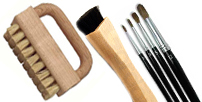 Natural Fill Brushes
Natural Fill Brushes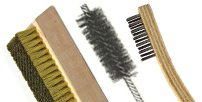 Wire Fill Brushes
Wire Fill Brushes Synthetic Fill Brushes
Synthetic Fill Brushes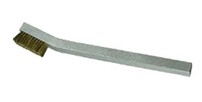 Metal Handle Brushes
Metal Handle Brushes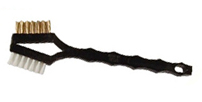 Plastic Handle Brushes
Plastic Handle Brushes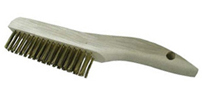 Wood Handle Brushes
Wood Handle Brushes